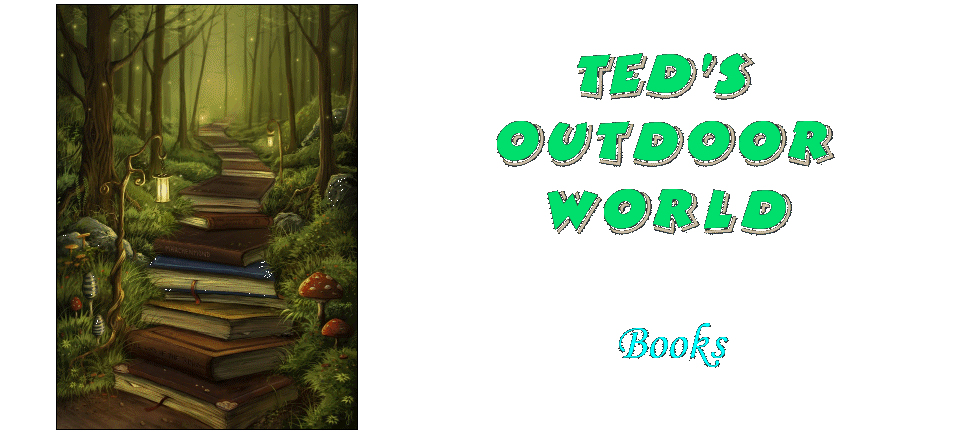
“Open a new book, and enter a new world.”
–Ted
|
Thousands of works have been published on various
aspects of the great outdoors, and I certainly have not read them
all. I can, however, highly recommend the following publications,
because I happen to own them.

In the Heart of the Sierras
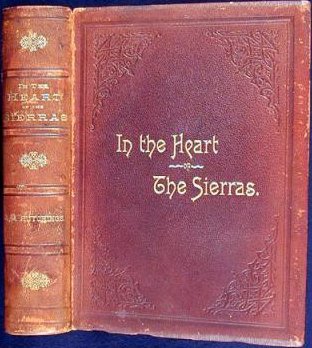 |
edited by James Mason Hutchings,
1888
This fine collection of documents and
photographs, now in the public domain, is about the early history
of Yosemite National Park. Notably and unfortunately absent,
for reasons explained in the text, are any writings of John Muir,
Yosemite's greatest champion and principal authority of the day.
I also dislike Hutchings's chronic misspelling of the verb "led",
but such issues might not be of concern to you.
Although this material is available (sort of)
elsewhere on the web, only here at Ted's World will you
find a readily downloadable and printable document that is free
of advertising and other clutter. Just click on the image.
Many thanks to Dan Anderson of
www.yosemite.ca.us, who originally digitized these
pages in 2004 from a copy in the San Diego Public Library.
|

West of the Rocky Mountains
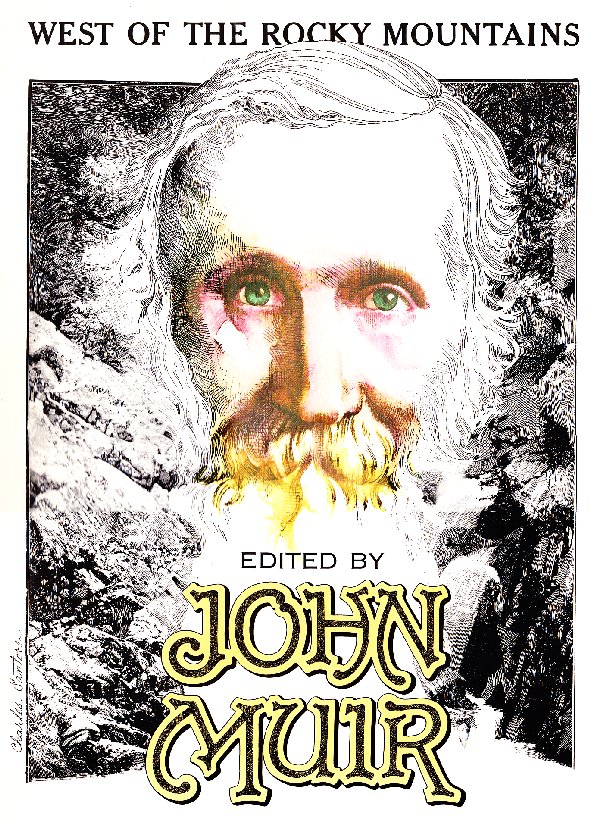 |
edited by John Muir
Running Press, 1976
This collection features twenty-six articles by
Muir and other authors of his time. Topics range from
Southern California to the Canadian Rockies.
Included are hundreds of marvelous old drawings
and photographs that one would be hard-pressed to find
elsewhere. Many images take full advantage of the large
(10"×13") format of this manuscript.
|

Prehistoric Rock Art of Nevada and Eastern California
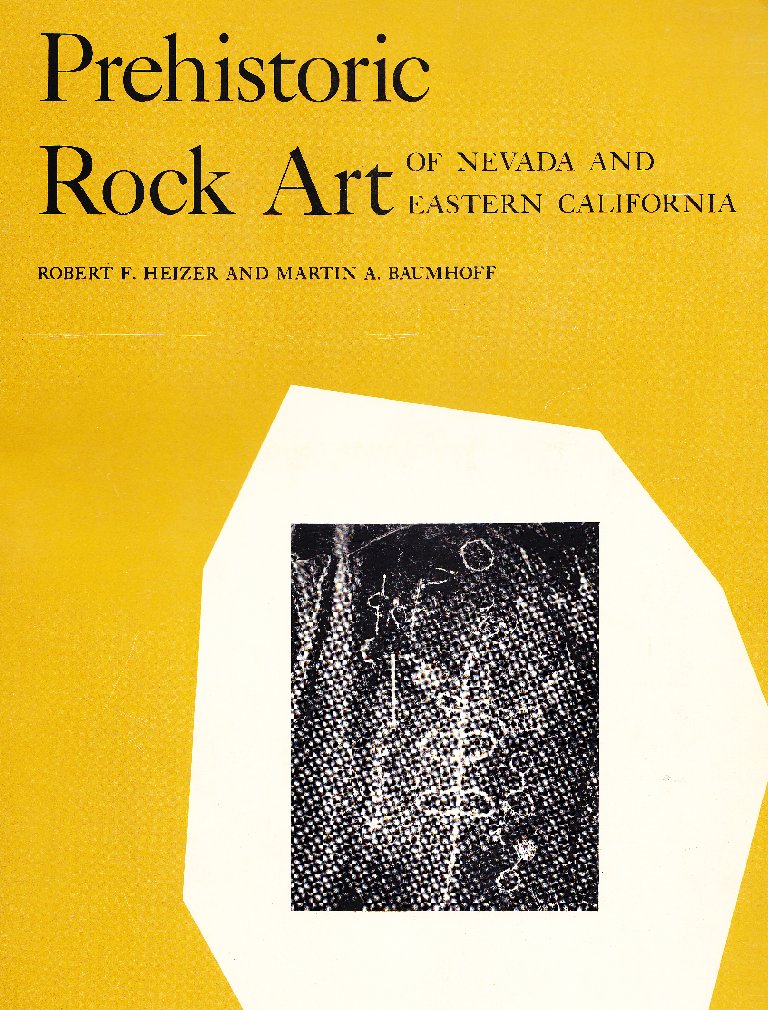 |
by Robert F. Heizer & Martin A. Baumhoff
University of California Press, 1962
This is the definitive study of petroglyphs in the
Great Basin area of the western United States. Included are
hundreds of catalogued, accurate-to-scale drawings of glyphs
and panels, as well as some (intentionally vague) information
regarding site locations.
Having been out of print since the 1970s, this book
has become something of a collector's item, with prices ranging as
high as $900 in 2014. I recently purchased a copy in good
condition for $70 from a European bookstore.
|

Down the Great Unknown
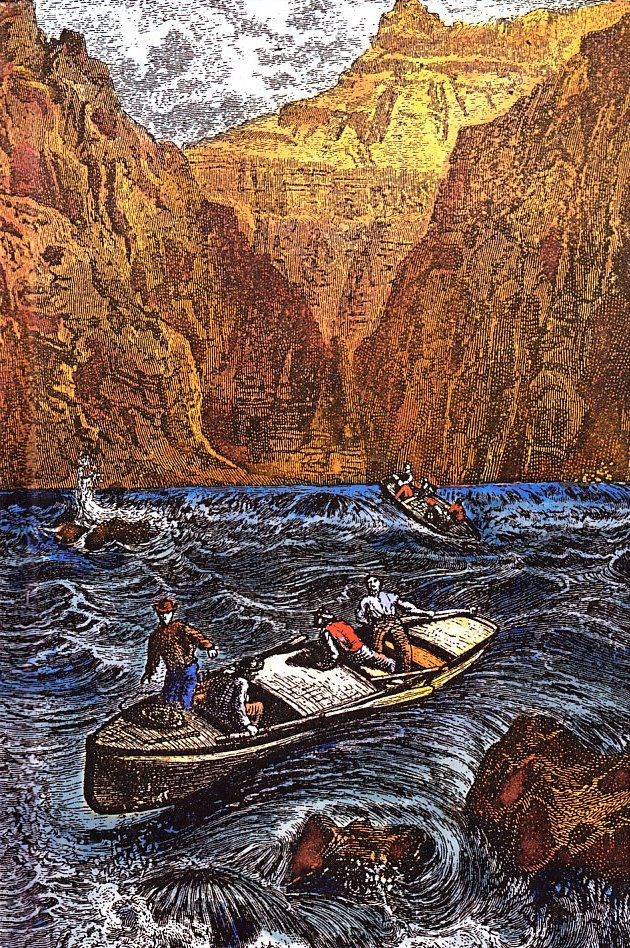 |
by Edward Dolnick
HarperCollins, 2001
This book chronicles John Wesley Powell's 1869 journey
of discovery and tragedy through the Grand Canyon. Here is the
text of a letter from Powell just prior to the trip:
“We are now ready to start on our way down the Great
Unknown... We are three quarters of a mile in the depths of
the earth... We have an unknown distance yet to run; an unknown
river yet to explore. What falls there are, we know not; what
rocks beset the channel, we know not; what walls rise over the river,
we know not. Ah, well! We may conjecture many things.
The men talk as cheerfully as ever; jests are bandied about freely this
morning; but to me the cheer is somber and the jests are ghastly.”
|

Ernest Thompson Seton —
The Life and Legacy of an Artist and Conservationist
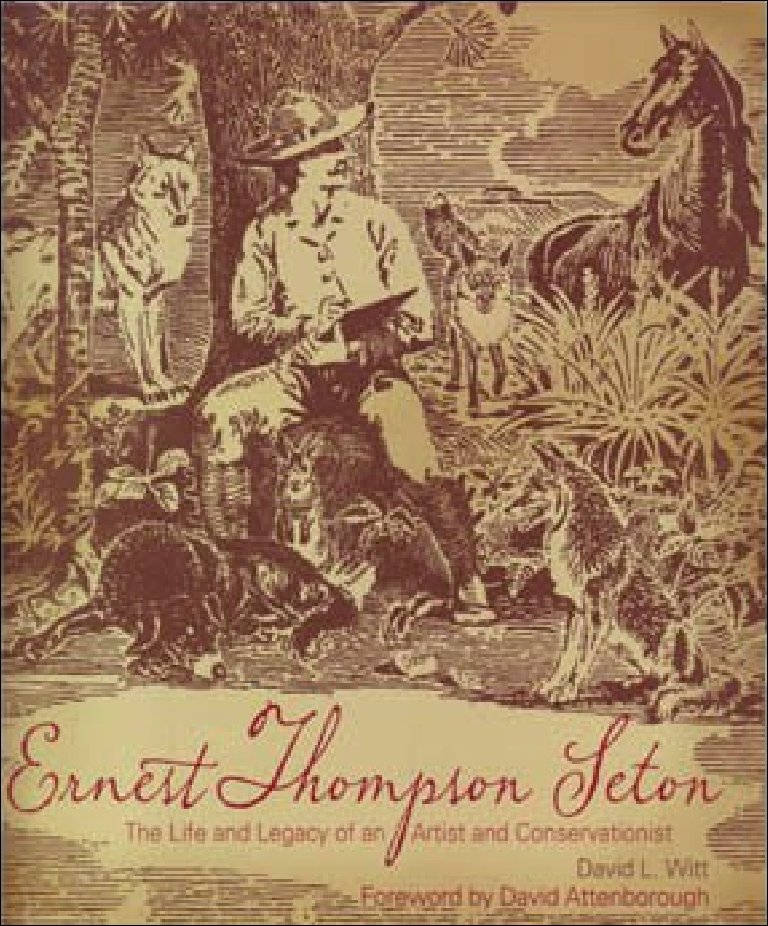 |
by David L. Witt
Gibbs Smith, 2010
Mr. Seton is renowned as a wildlife artist,
best-selling author, and co-founder of the
worldwide Boy Scout movement. This biographical accounting
includes Mr. Seton's transformation from professional wolf hunter
to ardent conservationist. Also featured are dozens of samples
of his paintings, many in full color.
|

Our Country's National Parks
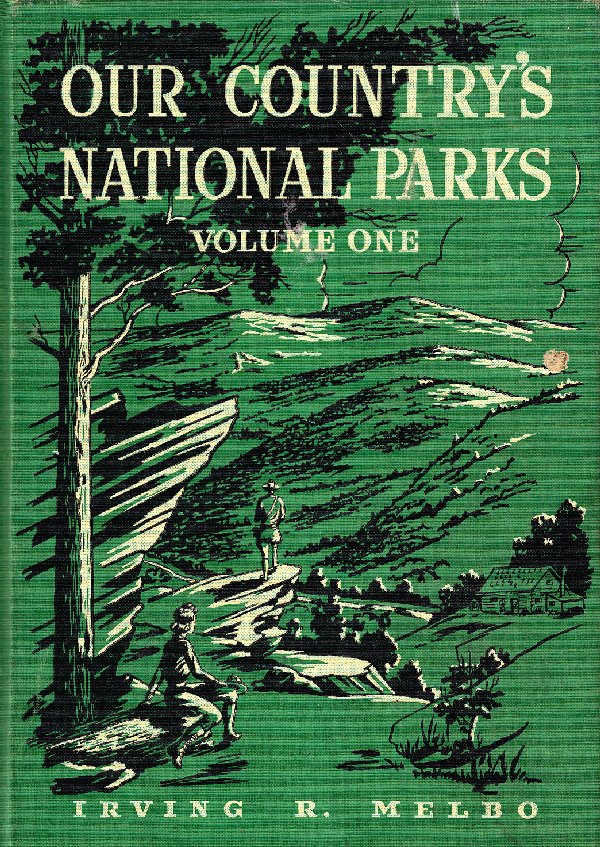 |
by Irving R. Melbo
Robbs-Merrill, 1941
This classic two-volume work details the history
and features of the nation's first twenty-six scenic
national parks. Included are photographs that you won't
have seen elsewhere. Inexpensive copies of this work are
readily available online.
|

Sierra Club Exhibit Format Series — 20 volumes, 1960-1968
Winner of the Carey-Thomas Award in 1964 for
Best Achievement in Creative Publishing in the
United States, this large-format collection argues
the cause of conservation by way of exquisite photography by Adams,
Hyde and others, plus the essences of such writers as Thoreau and
Muir. These are the most beautiful books I possess
and the last ones with which I ever would part.
#3. These We Inherit: The Parklands of America
#5. The Place No One Knew: Glen Canyon
#6. The Last Redwoods: Photographs and Story of a Vanishing Scenic Resource
#8. Time and the River Flowing: Grand Canyon
#9. Gentle Wilderness: The Sierra Nevada

Earth on Fire — How Volcanoes Shape our Planet
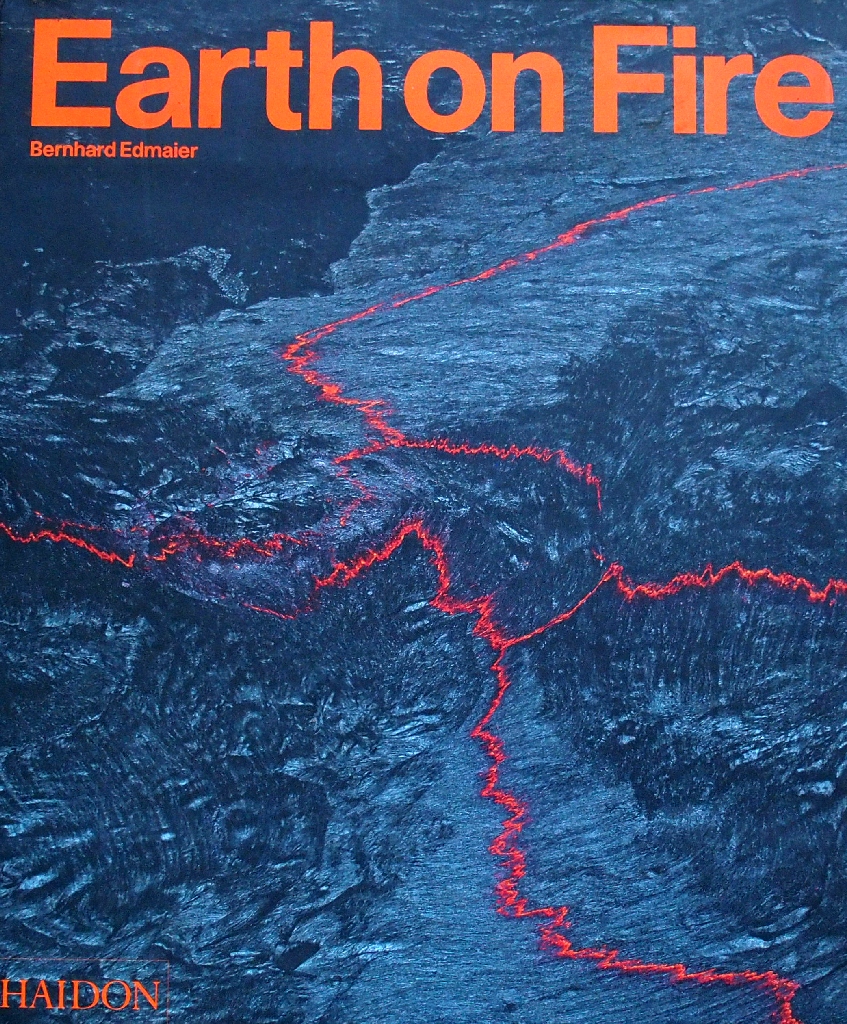 |
by Bernhard Edmaier
Phaidon Press, 2009
This German geology buff has dedicated more than 25 years to
photographing the surface of our planet, particularly the forms and structures
created without man's interference. Bernhard's work has been an international
sensation ever since he won the Kodak Photo Book Prize in 1998,
and the Hasselblad Master Award in 2001.
Mr. Edmaier does most of his work from an airplane or helicopter,
using a camera with 100 megapixels of resolution (your smarphone has perhaps 3mp
or so). Perhaps even more importantly, Bernhard sticks to the true
image of his subjects, declining any form of digital manipulation. What you
see is what is there, although you might have some difficulty believing what you
are seeing.
The book is huge (11" × 14"), making most images easy to
view. Edmaier also published an earlier 'condensed' version of his photographs,
Patterns of the Earth (Phaidon Press, 2007), with all images
being some multiple of 3½" × 3½".
In this book is a photo of a favorite Utah hiking venue that features
perhaps the most fantastic formations in North America, and which has made its way
onto some maps as "Edmaier's Secret".
|

Obata's Yosemite — The Art and Letters of Chiuru Obata
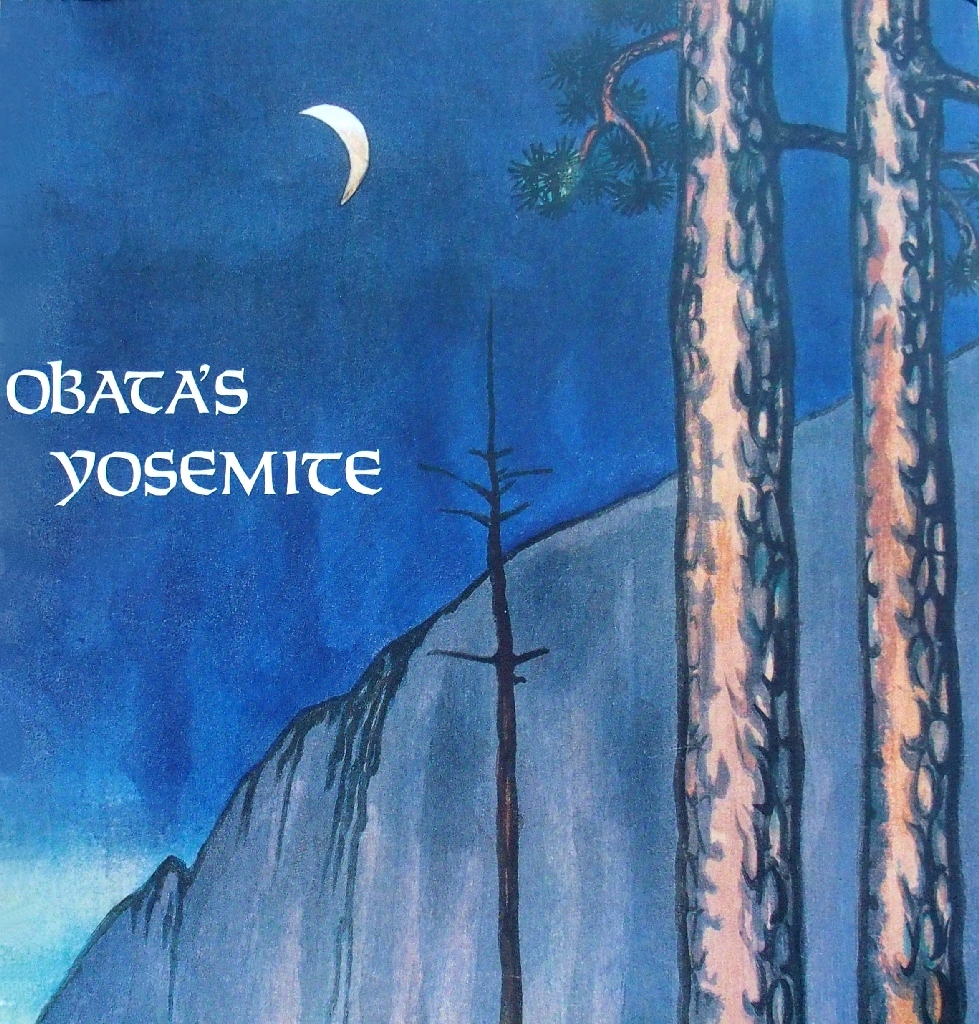 |
with essays by Janice T. Driesbach and Susan Landauer
Yosemite Conservancy, 1993
Inspired largely by a trip to the High Sierra in 1927,
the Japanese immigrant's watercolor and wood block reproductions of the Yosemite
and eastern-Sierra landscapes are exquisite testament to the artist's
uncompromised love of nature. He proclaimed this journey to be
"the greatest harvest of my whole life and future in painting".
Also detailed is Mr. Obata's personal journey, from escaping an
unwanted career as a soldier, to his internment at Manzanar, to art instructor at
U.C. Berkeley, to international acclaim. Many of the book's images are
previously unpublished elsewhere. Since December, 2019, seven
decades of Obata's work have been on display at the Smithsonian Museum.
In 2012, for a hiking journal I named and referenced a
Yosemite backcountry attraction as Obata Lake, knowing that it was a frequent
artistic subject of his. In 2021, the California Legislature followed my
cue (!) and commemorated the uppermost four miles of the Tioga Road
as the Chiuru Obata Great Nature Memorial Highway.
|


The Way Out — A True Story of Ruin and Survival
 |
by Craig Childs
Back Bay Books, 2004
Childs, a habitual seeker of desert solitude,
teams up with an ex-cop friend on a two-week
foray into a particularly inhospitable region of the American
Southwest. Each of them hopes not just to survive the
trek, but to conquer some inner demons and ascribe some meaning
to his life as well.
|


Between a Rock and a Hard Place
–aka– 127 Hours
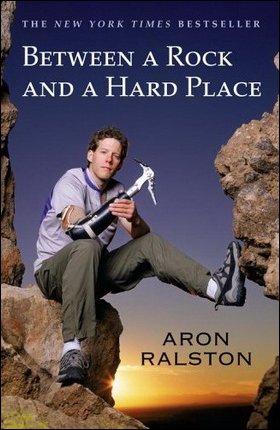 |
by Aron Ralston
Simon & Schuster, 2004
This best-seller chronicles the author's escape
from entrapment in a Utah slot canyon by means that most of us
would not have been able to imagine, let alone accomplish.
The 2010 movie version, 127 Hours,
garnered six Academy Award nominations; yet it pretty much
focused only on the hike and accident themselves, while ignoring
other aspects of Ralston's life as well as the considerable
search-and-rescue efforts by Aron's parents and government
agencies. These things are detailed in the book.
Note: The original printing featured Aron Ralston
himself on the cover, but the photo gracing the movie-hype
reprint is of actor James Franco (click on the image).
|















